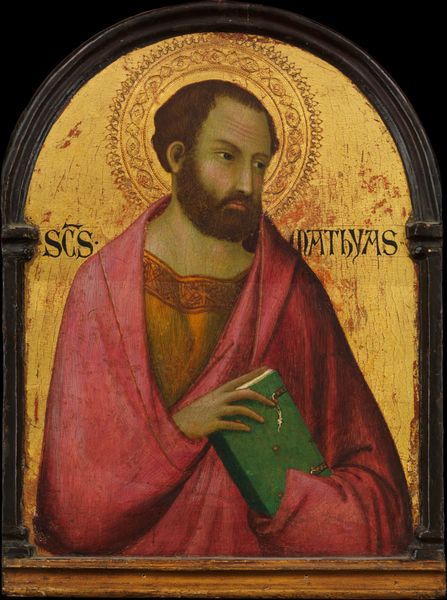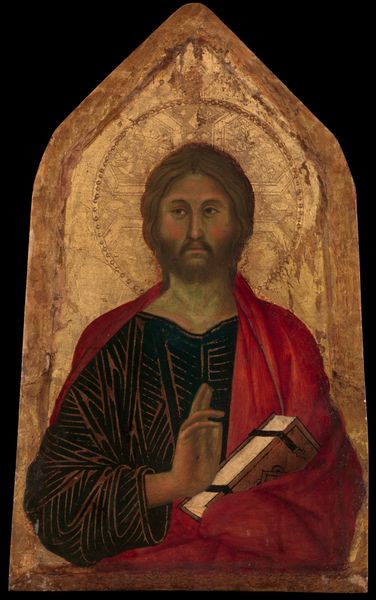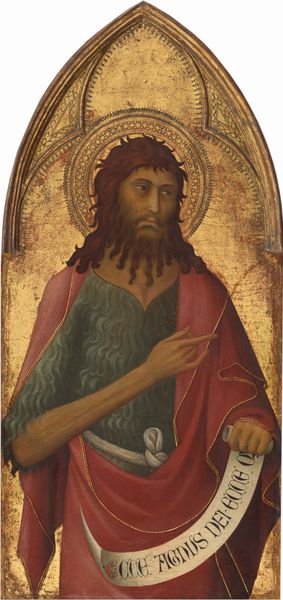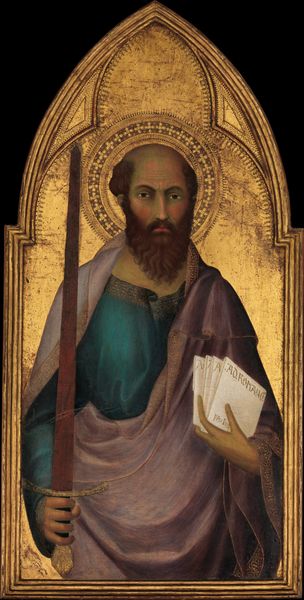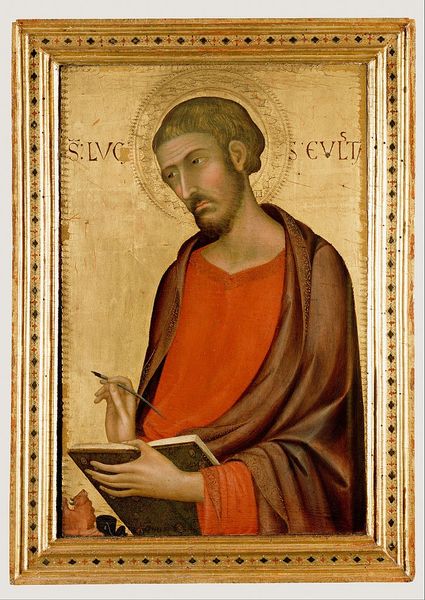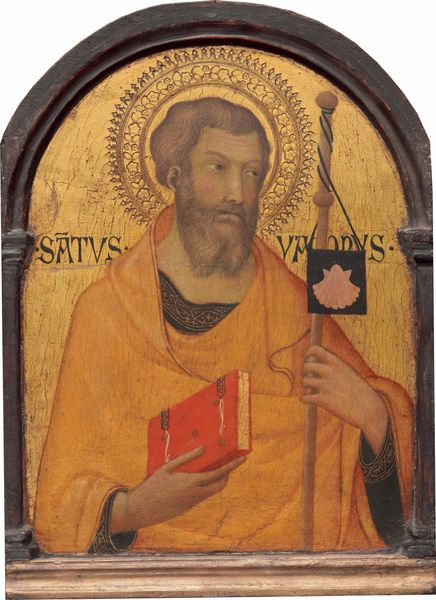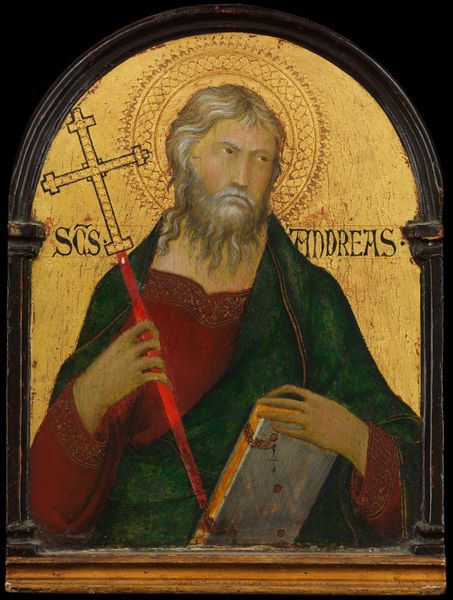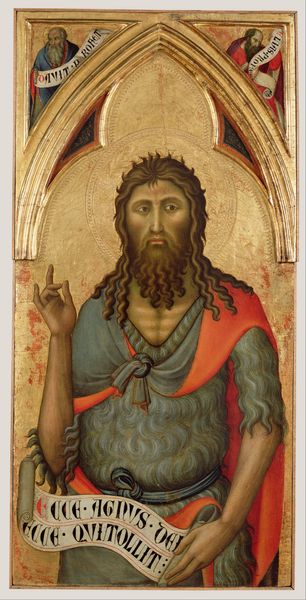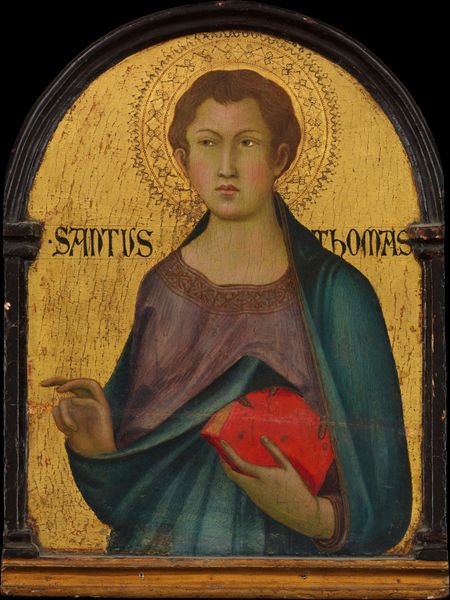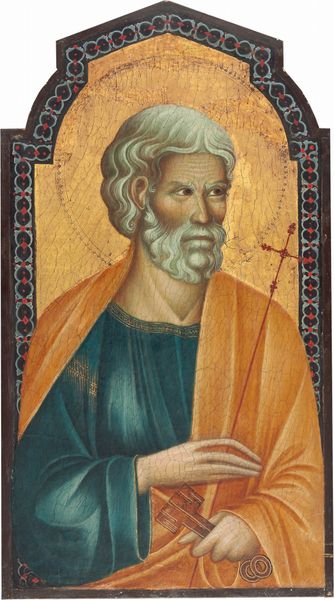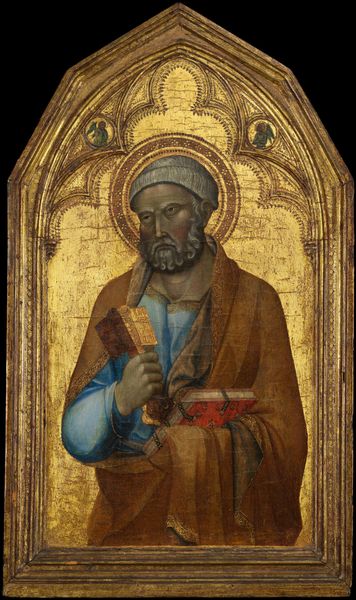
tempera, painting
#
portrait
#
medieval
#
tempera
#
painting
#
sienese-school
#
oil painting
#
history-painting
#
italian-renaissance
#
portrait art
Dimensions: painted surface: 26.4 x 19.6 cm (10 3/8 x 7 11/16 in.) overall: 30.8 x 23.2 cm (12 1/8 x 9 1/8 in.) framed: 44.4 x 60 cm (17 1/2 x 23 5/8 in.)
Copyright: National Gallery of Art: CC0 1.0
Curator: This tempera on panel piece, "Saint Matthew," created by Simone Martini around 1315 to 1320, has such an immediately arresting presence. Editor: Arresting is the word! There’s a somber stillness to the figure, a gravity despite the vibrant colors. The saint's gaze is so direct; it makes me feel accountable. Curator: Yes, it invites contemplation. Matthew is depicted holding a quill, poised to write, alongside a closed book, presumably his Gospel. It’s a potent symbol of knowledge, authority, and the act of bearing witness. The gold background is interesting, considering what it recalls from a Medieval perspective. Editor: Absolutely, the gold speaks volumes. It’s not just decorative. Think about what that halo signifies, or how the flatness removes Matthew from any sense of tangible space and time. This creates such an intentional distance from the viewer, right? It declares his otherworldliness. Curator: Precisely. But what intrigues me is how Martini manages to convey humanity within this stylized form. The folds of his garments, the gentle expression… They're quite softening when contrasted to what are common artistic practices of the time. It's almost a humanizing of the divine. Editor: I agree. And that's where its socio-political context becomes crucial. Italian Renaissance art was beginning to explore humanism more directly, subtly shifting the focus from pure religious symbolism to individual experience. Do you think works like this laid a pathway to that eventual perspective? Curator: Undoubtedly. We can see the transition reflected in Martini's blending of Byzantine tradition with emergent naturalism. He's using established iconographic language, but pushing its boundaries. Notice also, it could also act as a challenge to rigid ecclesiastical dictates, in some manner. Editor: The piece has given me a greater view and understanding into the politics of religious art, reflecting changing cultural values, it’s rather magnificent. Curator: Indeed, thinking about the emotional and historical weight embedded within its form and color certainly lends a unique context to that understanding.
Comments
No comments
Be the first to comment and join the conversation on the ultimate creative platform.
